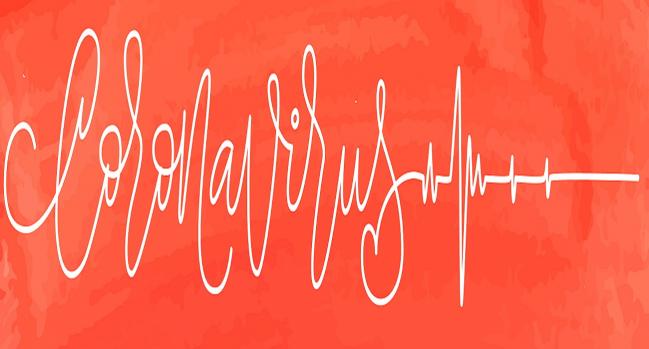Arrhythmias in COVID-19: New Review Tackles Mechanisms, Management
The virus or its treatments may disrupt heart rhythm, but the immune response and its targets likely deserve the most scrutiny.

Be ready to face cardiac arrhythmias in critically ill COVID-19 patients and monitor for any heart rate effects of drug treatment, and be aware that arrhythmias may stem from cardiac complications rather than being caused by the virus itself. Those are some of the key messages from a new review summarizing what’s known about the potential mechanisms and manifestations of cardiac arrhythmias in the setting of COVID-19.
A number of rapid release guideline documents addressing arrhythmias in the setting of SARS-CoV-2 infection have been issued since the pandemic began, along with a steady trickle of observational studies and case reports, lead author Parinita Dherange, MBBS (Brigham and Women’s Hospital, Boston, MA), told TCTMD. “Most of these show that arrhythmia in COVID-19 is usually seen in critically ill patients, and that the risk of arrhythmia in these patients is likely due to systemic illness rather than direct effects.”
The aim of the review was to amass information published to date, said senior author Usha Tedrow, MD (Brigham and Women’s Hospital).
“Everything's been coming out kind of piecemeal—a case report here, a small series there,” Tedrow told TCTMD. “By bringing all the papers together in one place where other electrophysiologists can see it, the hope is that it sparks some ideas in people about future investigations that could be helpful in this disease.”
The review was published online earlier this week in JACC: Clinical Electrophysiology.
Mechanisms and Manifestations
Dherange and colleagues detail the range of potential mechanisms that could lead to arrhythmogenesis in COVID-19. These include hypoxia caused by direct viral involvement in the lungs, myocarditis, abnormal host immune response, myocardial ischemia, myocardial strain, derangement of electrolytes, vascular complications including intravascular volume imbalances, and adverse drug effects—all of which are reviewed in the paper.
The last—drug-related arrhythmias—has emerged as a key concern with drugs touted early on in the pandemic as possible treatments, most notably concerns over QT-interval prolongation and torsades de pointes with hydroxychloroquine/chloroquine and azithromycin. More recently, experts have also raised red flags about the risk of bradycardia with lopinavir/ritonavir. By now, said Dherange, “the knowledge is there” that new agents or agents “repurposed” from other settings may carry arrhythmia risks alone or in combination, and any rhythm effects need to be closely monitored. Indeed, cardiac monitoring, Tedrow added, is standard in critically ill patients.
There are limited data exploring the possible direct effects of the SARS-CoV-2 virus as an arrhythmia trigger, mainly coming from small series out of China and Italy. Taken together, these data suggest that arrhythmia prevalence is low overall, but higher in critically ill patients, Dherange et al note. Arrhythmia type may range from bradyarrhythmias and atrioventricular block to tachyarrhythmias and, more rarely, ventricular arrhythmias.
In the period of time when patients are critically ill, the majority of care is supportive. Usha Tedrow
In terms of treatment, Dherange and colleagues note that there are not yet enough clinical studies or experience to specifically guide arrhythmia management in this setting; bradyarrhythmias or tachyarrhythmias that arise should be treated according to existing guidelines. Other professional groups, they note, including the European Society of Cardiology, have already issued consensus documents on diagnosis, treatment, safety, and personal protection considerations in this setting.
As Dherange stressed to TCTMD, the emerging picture of arrhythmogenesis in this disease points to the immune system as the main culprit. That’s true of most of the cardiac manifestations of this illness, she added. “We need to mainly focus on treating the underlying conditions rather than trying to treat the arrhythmia itself.”
A separate section of the document tackles the potential for cardiac drug interactions with COVID-19 therapies, offering guidance given the many medications used in the critical care setting.
The next big question, not just for electrophysiologists but for specialists of every stripe, is what will be the late effects of the viral infection, if any, on patients who survived a critical course of COVID-19 or recovered from a milder course.
“In the period of time when patients are critically ill, the majority of care is supportive: we really are trying to support patients until they can heal on their own and we know that predisposing conditions may dictate whether they become ill in the first place,” Tedrow said. “But then there are a group of patients that maybe never become critically ill that may also have late cardiovascular manifestations and that's an area of active research. And we're all hoping that we learn more about the immune responses in those patients,” and whether arrhythmias and other forms of cardiac injury may be important down the road.
“That’s really a story that's yet to be written,” Tedrow added.
Shelley Wood is the Editor-in-Chief of TCTMD and the Editorial Director at CRF. She did her undergraduate degree at McGill…
Read Full BioSources
Dherange P, Lang J, Qian P, et al. Arrhythmias and COVID-19: a review. J Am Coll Cardiol EP. 2020;Epub ahead of print.
Disclosures
- Dherange and Tedrow report no relevant conflicts of interest.


Comments